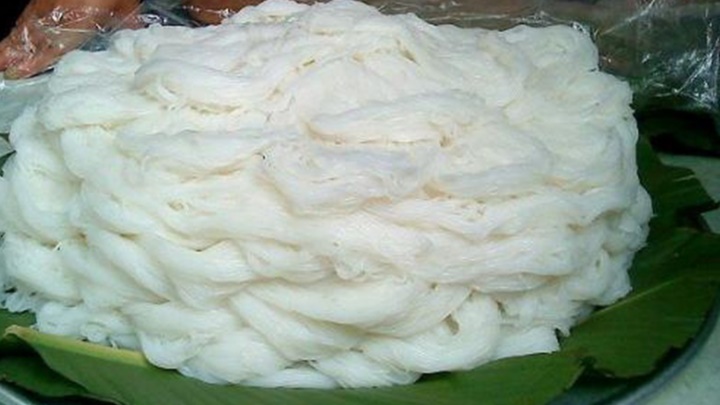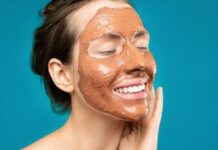The rice vermicelli is made from selected broken rice. To ensure high-quality vermicelli, the broken rice must be carefully chosen to prevent mold or insects. The production process of clean vermicelli usually takes from 5 to 7 days to create a finished product with a natural white color and a crisp texture.
However, nowadays many vermicelli producers add chemicals to make the vermicelli faster, more elastic, and visually appealing. Using these types of vermicelli not only reduces the quality of the dish but also increases the risk of health problems. Therefore, many people are concerned about how to differentiate between clean and chemically contaminated vermicelli.
How to differentiate between clean and chemically contaminated vermicelli
To determine whether the vermicelli is safe, you can rely on the following factors.
Color
Due to being made from broken rice, natural vermicelli has an off-white color, slightly cloudy, not as bright as vermicelli with chemicals.
Glossiness
Many manufacturers use chemicals to make the vermicelli look appealing and attract the attention of customers. These types of vermicelli are usually bright white, shiny, and more elastic, whereas clean vermicelli has no glossiness and has a cloudy white color.
Texture
Another sign to differentiate between clean and chemically contaminated vermicelli is texture. Clean vermicelli has a natural elasticity, making it easy to break or crumble when pulled strongly. When touching the vermicelli, you will feel a slightly sticky, soft texture characteristic of rice flour.
On the other hand, vermicelli soaked in chemicals is usually tougher, crispier, and has better elasticity. It has little or no sticky, soft sensation of rice flour.
Taste
In addition to observing and visually assessing the vermicelli, clean and chemically contaminated vermicelli also have differences in taste when consumed. Clean vermicelli usually has a slightly sour taste, which is the natural sourness of fermented rice flour, not a sign of spoilage. On the other hand, vermicelli with chemicals has usually been bleached and deodorized, so it no longer has that distinctive sour taste. This is an important sign to differentiate between clean and chemically contaminated vermicelli.
Differentiating with fish sauce
You can use fish sauce to differentiate between clean and chemically contaminated vermicelli. Before serving the dish, try dipping a bit of vermicelli into a bowl of fish sauce. If the vermicelli becomes soft and quickly absorbs the fish sauce, it is clean vermicelli. In contrast, vermicelli with chemicals will be harder and absorb less fish sauce due to the chemical layer that prevents the sauce from penetrating inside.

There are several ways to differentiate between clean and chemically contaminated vermicelli that you can refer to. (Illustration: Vietnamnet)
Popular types of vermicelli
There are quite a few types of vermicelli that are suitable for various dishes.
Bun roi: After being removed from the rinsing pot, this type of vermicelli is loosely placed in a container without a distinct shape. Bun roi is the most common type and suitable for various dishes.
Bun vat or bun la: The vermicelli strands are squeezed into thin threads with a diameter of 4-5mm and a length of about 30-40 cm. When eating, these vermicelli strands are cut into short sections.
Bun nam: The vermicelli strands are formed into small, flat cakes, and they are less common than the two types mentioned above.
Bun vat and bun nam are suitable for dipping fish dishes, such as chilled snail vermicelli or vermicelli with shrimp paste.
Currently, to meet the special demands of consumers, many places produce vermicelli made from brown rice.
Referenced from VTC News
High Demand for ‘Super Giant’ Chili Pepper Despite Expensive Cost
The talk of the town is a new breed of “giant super chili” pepper that has been making an appearance. It’s powerful heat and hefty price tag is creating an excitement as people line up in anticipation of tasting this fiery vegetable. Want to know more about this mysterious discovery? Read on to find out more!



































